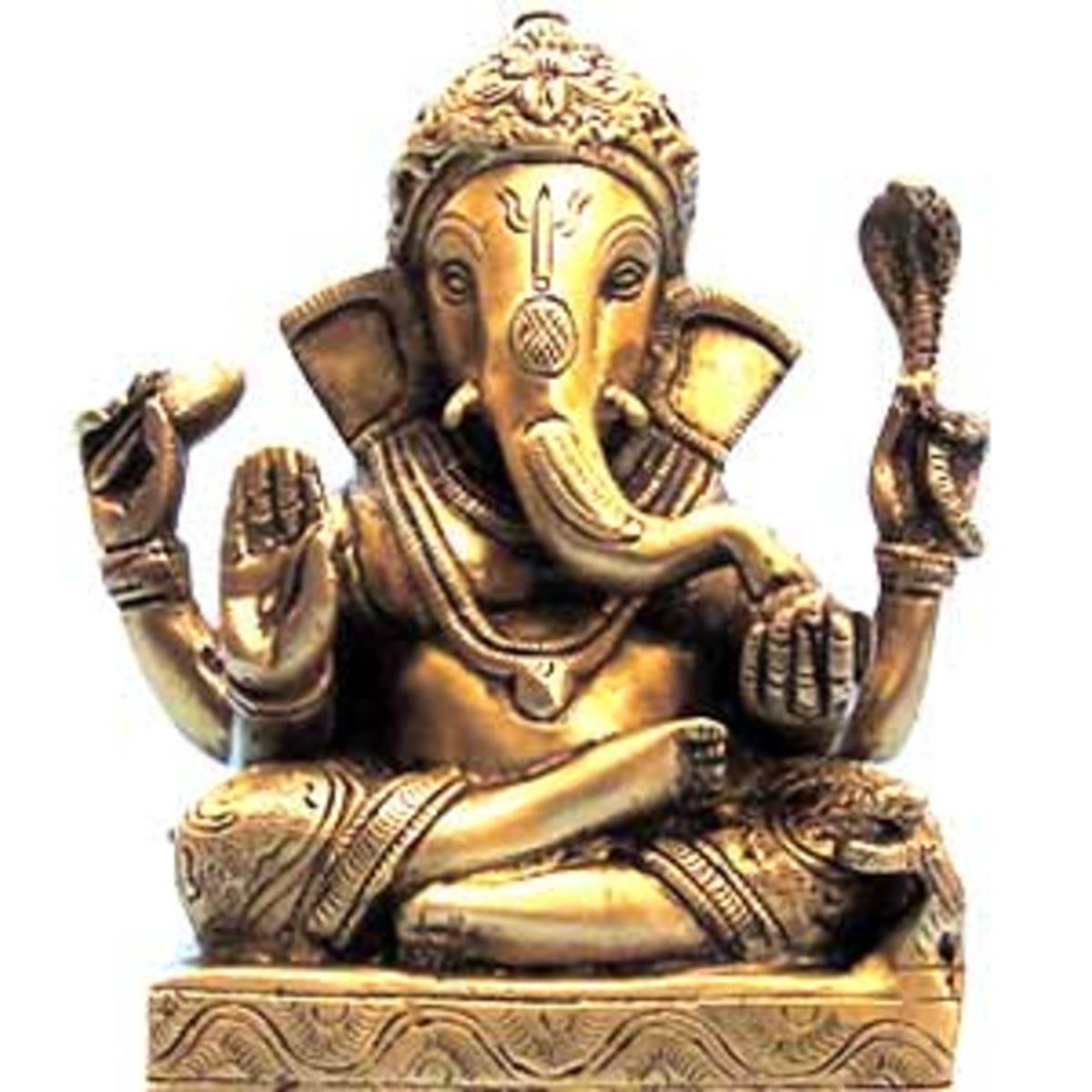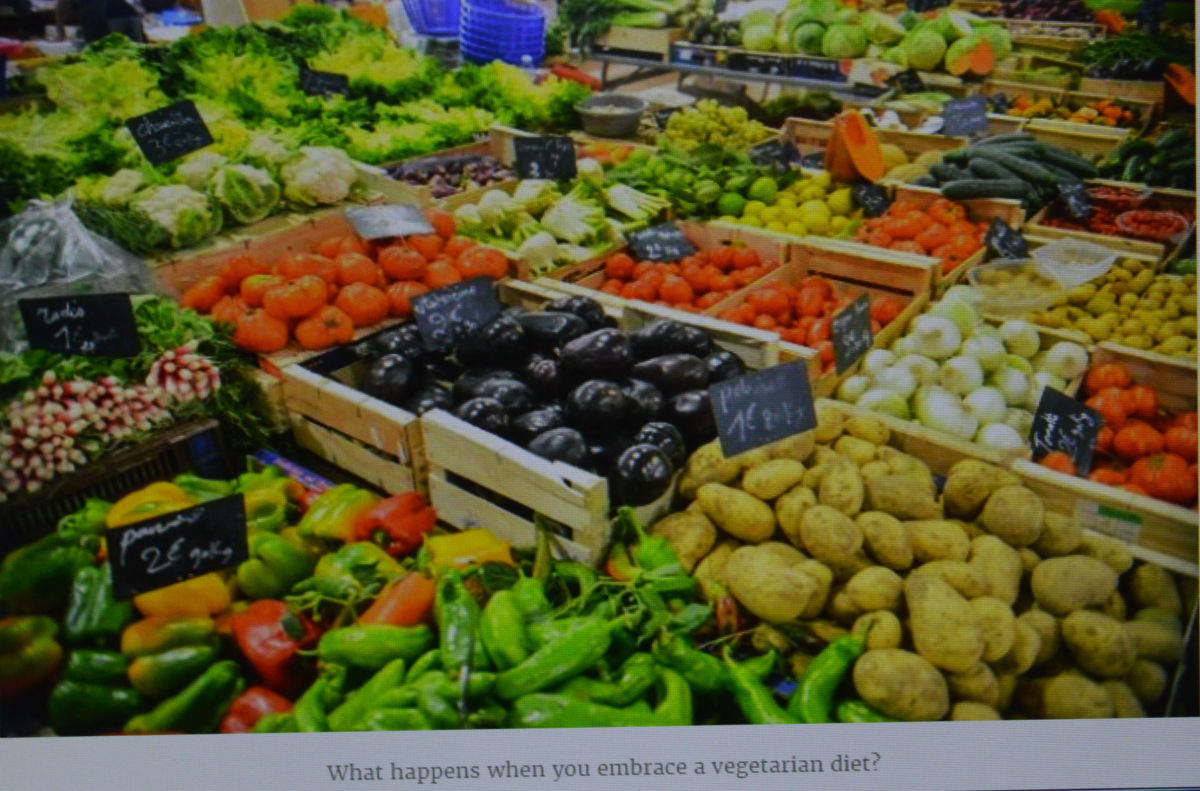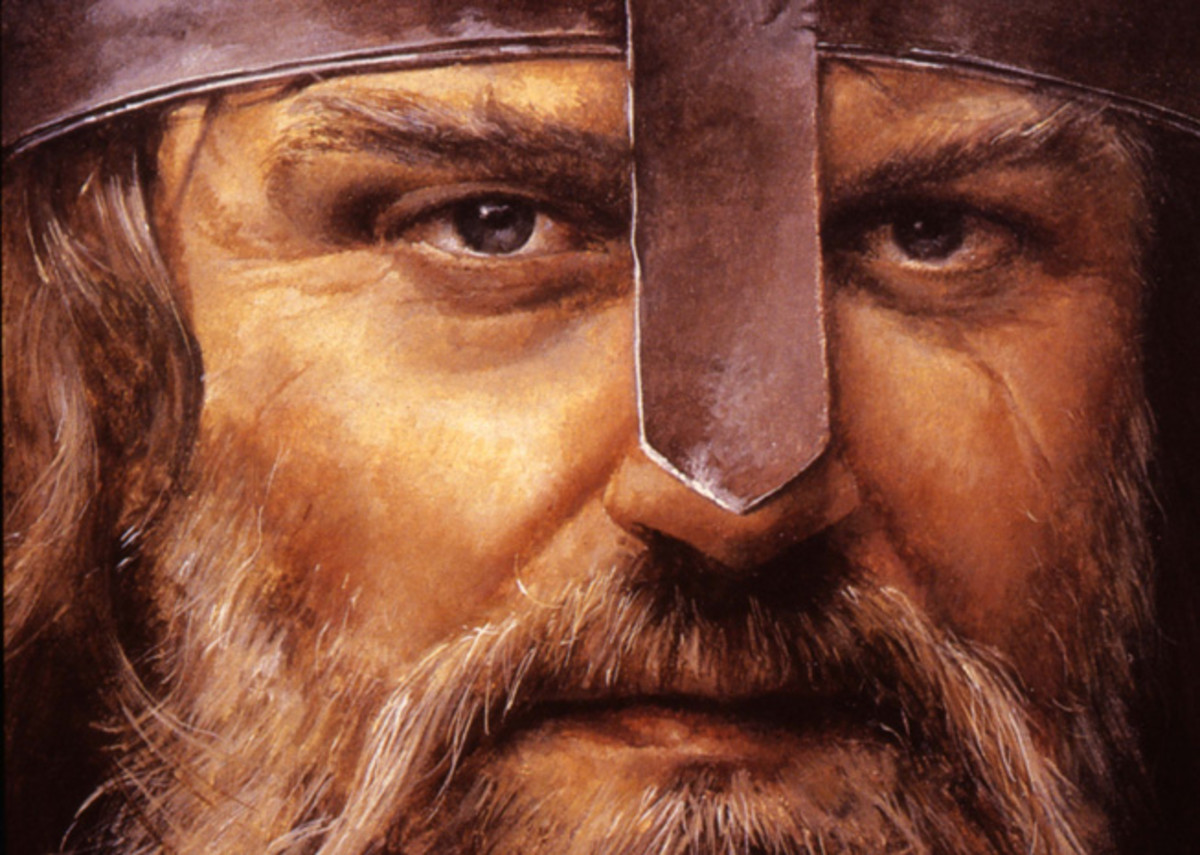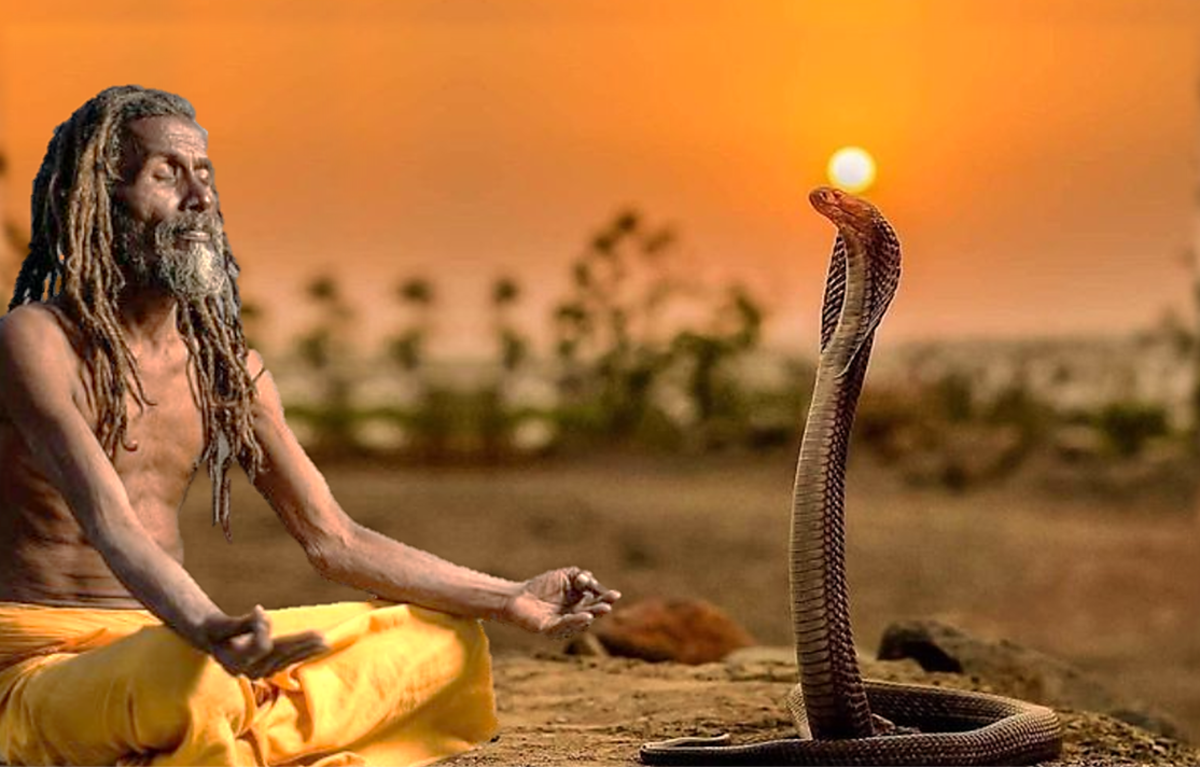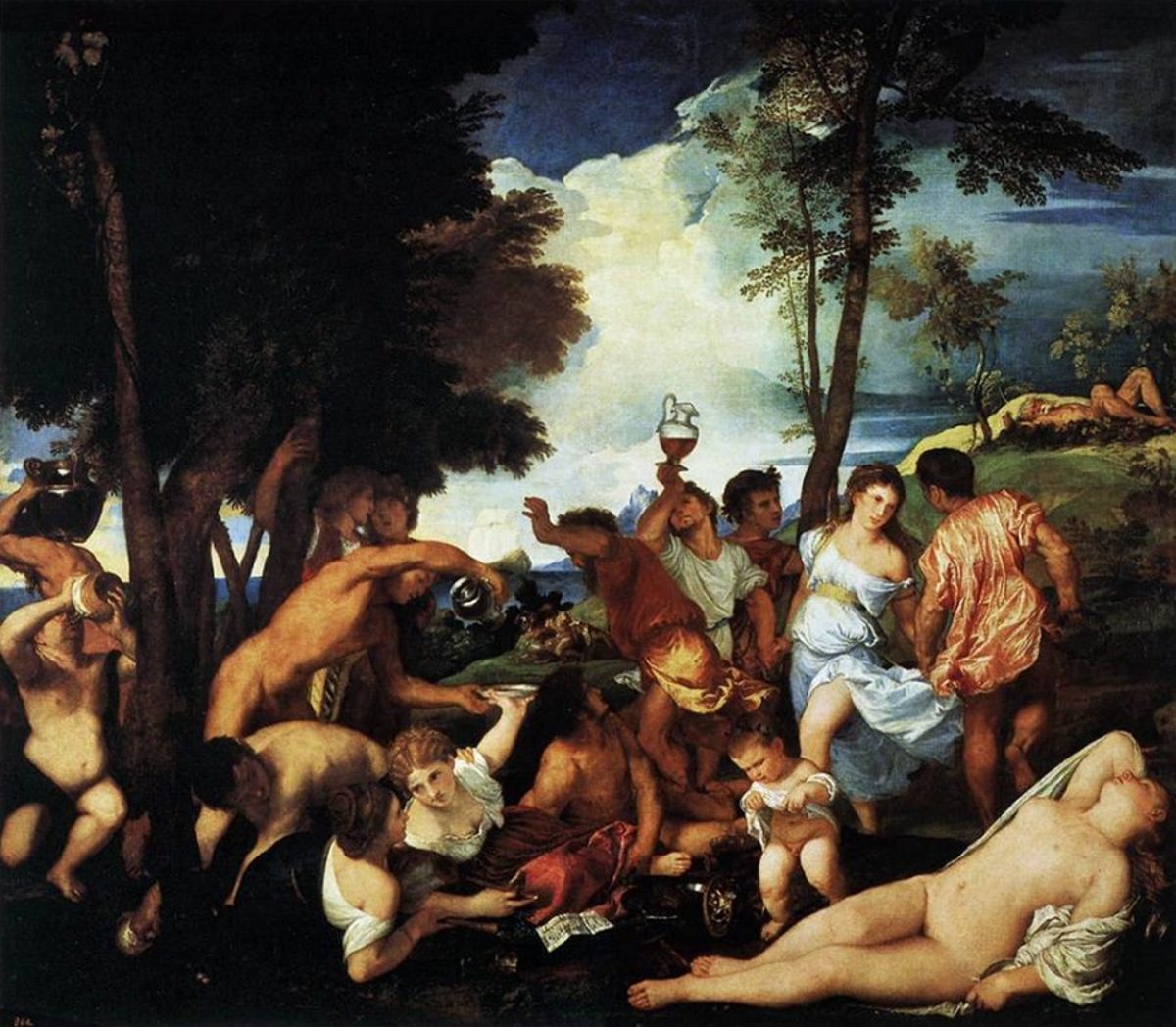Why I am a vegetarian? -Life styles India, USA, Europe
June 19, 2010
For a change I want to write a few articles on life style and philosophies in average Indian life. It is much more pleasant to talk about these ideas than reactions on political events. Since I have lived in USA also often and visit Europe, a lot of my remarks will also include the same aspects in these countries too, of course with my Indian color.
I think ideas about religion automatically become part of these topics. Religion has been unnecessarily made a separate entity in countries like India, where majority of people are any way from Hindu, Jain, Sikh or Buddhist communities, in which religion is not considered so much of a separate entity from these aspects. Perhaps it is true for other countries too for different reasons. In USA, Europe also time has come now, that it should be treated as part of these aspects.
Like Russian characters in movies of Woody Allen
I feel among almost all these communities in India, most of ideas about philosophy, religions, life style, you learn from talking. In daily life, Indians talk quite a bit and on every issue. Very much like characters in Dostoevsky's novels or Russian characters in movies of Woody Allen. Though in actual life it is mostly pleasant and not comical. Indians, particularly Hindus do not visit temple so regularly as others do. At least there is no compulsion. In any case temple or any other group activity involving hundreds of people except for going to school is nonexistent in life of a child. There are no fixed books too for reading. We mostly learn about life, set up our basic ideas about god, religion, rituals etc. from what elders talk. Mostly they talk or argue among themselves. Children just listen. But that leaves impressions on them. Stories your grandmother or grandfather tell you and a little explanations mom offers about characters and actions in those stories, are the main tools, which teaches one about religion and life style. That is all. Even the well known books, like Bhagvad Geeta etc. which in western countries are thought of as forming the basis of life of Hindus, are rarely read by them. You know more about contents in them, from stories you hear. Religion or rituals are considered by people right from childhood, as something for fun and enjoyment. There is very little of organized religion, where some priest lectures about god etc. All this was in this way in my childhood time
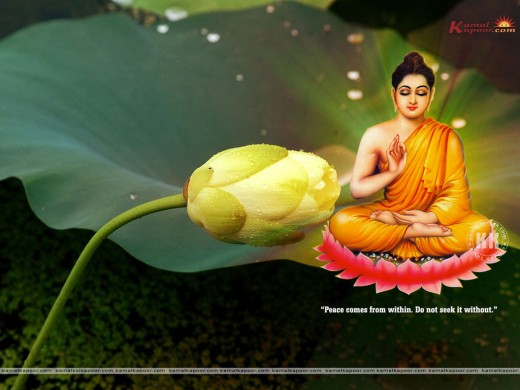
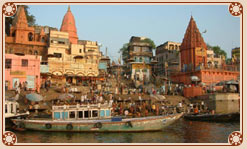
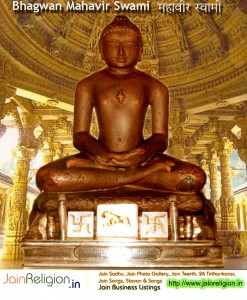
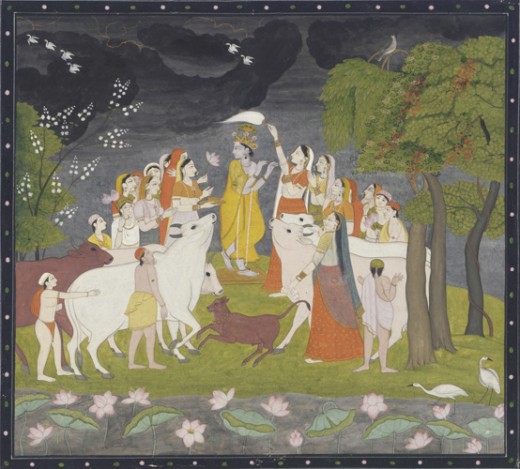
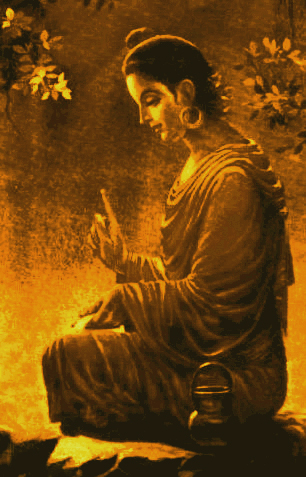
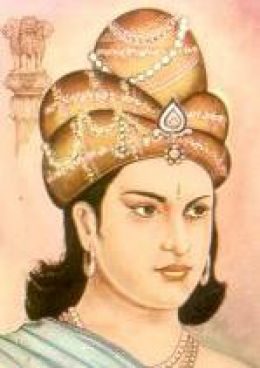
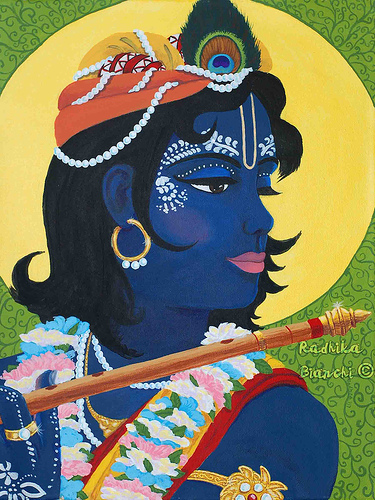
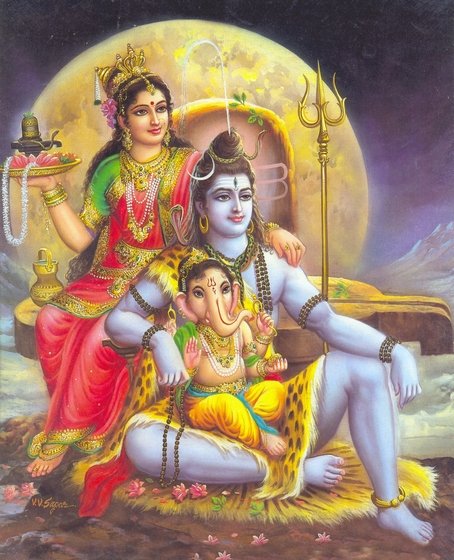
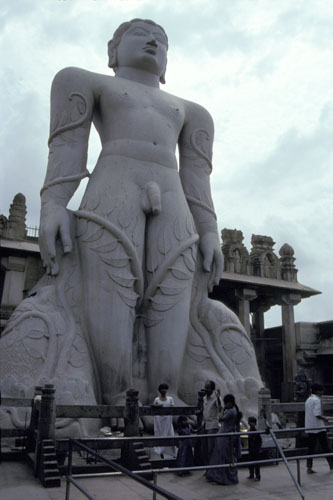
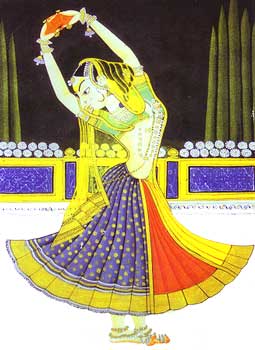
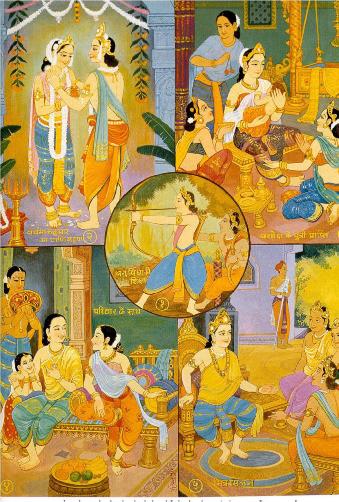
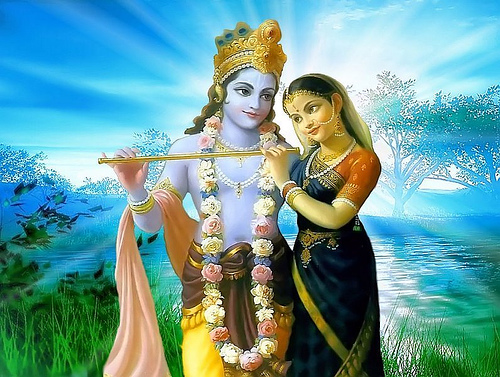
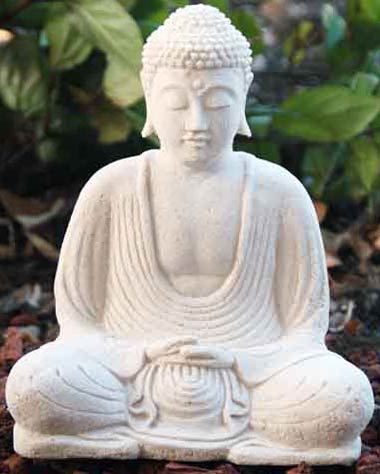
Now children pass more time with servants- grand parents may be in some other town
Though with family becoming nuclear in towns and cities, both husband and wife working and grand parents not so often there, things seem to be changing now. Lot of times, children pass much more time with servants who come to clean house or to baby-sit. People are indeed a little worried about it. Children learning basic ideas from people with much lower level of education is not such a good idea. Not only parents do not have much time for them, in the evening when they are back, often they feel guilty that they did not give enough time to children. This makes them to please children with what ever they demand. Which is again not a good idea, in building up character of a young guy/girl. But any way these problems, I might focus on some other time. Let me start with a simple idea I learnt in my childhood.
Why I am a vegetarian?
I was asked this question during my first trip to USA by some girl. I was staying in Colorado. I was then perhaps about 25 years old. Why I am vegetarian? Before that I never even thought about it. In India to be vegetarian is very common. If you grow up in a vegetarian family you become vegetarian. If you grow up in a non-vegetarian family you become non-vegetarian. This is so natural, that you never even think of asking about it, why you are vegetarian -Like I did not even consider the question for 25 years. I took some moments in USA to answer that girl. But I could see the reason immediately. I told her "Well! I am vegetarian because I grew up in a vegetarian family." She was a little surprised about that. She in fact asked me "Every body in your family Vegetarian? How can that be? I never met such a family. I know only one more vegetarian apart from you. And you are vegetarian, just like that? Gee! Oh! I thought people are vegetarian only for some principles?"
More than 40% of Indians are vegetarian
Statistics say more than 40% of Indians are vegetarian. That makes it about 70% of all vegetarians in world. I think actual numbers must be even more. Most non-vegetarians also take often only vegetarian food. Many restaurants serve only vegetarian food. I have often seen statements in other countries like "Brahmins are vegetarians others are not etc." or "people in India are vegetarian because of religious reasons." Those comments are quite off the mark. Many communities in India have a large percentage of families which are vegetarian. Most of it is out of culture or tradition.
How It all started
When and how it started no body really knows. One has to go to ancient texts. There are four most ancient books Vedas-. Rig Veda,Yajur Veda, Athar Veda and Sam Veda, written perhaps more than 5000 years back (Initial versions are only by oral communication -they are called "shrutis"- some thing you heard, only later versions called "samhitas" are the compiled vedic literature). Though shrutis survive perhaps much more in rituals because of their poetic form. A lot of initial Hindu ideas and even other knowledge originate from these Vedas. Word Veda actually means Knowledge. Vedas do describe rituals and life style followed at that time. During Vedic time it seems vegetarianism was not followed so strictly. In that early Vedic times rituals included sacrificing animals and then meat of sacrificed animal was taken as a food. This was done only by priests etc. who performed these rituals. It is not clear what did others do. There are some references though that unnecessary killing should not be done. By 6th or 7th century BCE (for example in Krishna (black) yajurveda or Chandyoga upnishada) killing of an animal except for rituals was strictly prohibited. Here are sentences from some of these ancient texts.
(Mahabharata is considered to be one of the oldest epic written more than 2500 years back and is among longest poetry even today. Bhgavad Geeta is part of Mahabharata, it was preached by Krishna who is supposed to have lived before Kalyuga -the era of today. Kalyuga is about 5000 years old. )
"You must not use your God-given body for killing God's creatures, whether they are human, animal or whatever." (Yajur Veda, 12.32)
"By not killing any living being, one becomes fit for salvation." (Manusmriti, 6.60)
"The purchaser of flesh performs himsa (violence) by his wealth; he who eats flesh does so by enjoying its taste; the killer does himsa by actually tying and killing the animal. Thus, there are three forms of killing. He who brings flesh or sends for it, he who cuts of the limbs of an animal, and he who purchases, sells, or cooks flesh and eats it-all of these are to be considered meat-eaters." (Mahabharata, Anu. 115:40)
"…all that you do, all that you eat, all that you offer and give away, as well as all austerities that you may perform, should be done as an offering unto Me." (Bhagavad-gita 9.27)
The Gita also clarifies exactly what should be offered: "If one offers Me with love and devotion a leaf, a flower, fruit or water, I will accept it." (Bhagavad-gita. 9.26)
"One who is not envious but who is a kind friend to all living entities, who does not think himself a proprietor, who is free from false ego and equal both in happiness and distress, who is always satisfied and engaged in devotional service with determination and whose mind and intelligence are in agreement with Me—he is very dear to Me." (Bhagavad gita.12.13-14)
Gautam Buddha was perhaps not vegetarian
Gautam Buddha perhaps lived in 18th century BCE or 6th century BCE (general history books depending on some Greek stray papers assume the date to be around 6 BCE but many experts, who depend on ancient Indian records have opinion that he perhaps lived much earlier around 18 BCE, at the end of a period of a long drought, which had lasted for about 300 years). During Buddha's time people were both vegetarian and non-vegetarian. Buddha himself was most likely a non-vegetarian. There were disputes in those days about vegetarianism. Nonviolence by then was a basic principle. But meat of an animal which was not killed just for food was ok., was the opinion of some. One of the story says that Buddha died after taking sukara-maddava, which is translated by some as pork, while as mushroom by others. There are also references that even when Buddha was alive one group of monks led by Devadatta, left the community because they wanted stricter rules, including an unconditional ban on meat eating.
Emperor Ashoka
But the well known emperor Ashoka, the Great in 3rd century BC was strictly vegetarian (there are two well known emperors with same name Ashoka in Indian history, Ashoka Maurya and Ashooka Priyadarshini. According experts, Indian records suggest that one of them Ashoka Maurya lived around 1500 BCE and Ashoka Priyadarshani lived around 3rd century BCE, both had adopted to buddhism). He had adopted to Buddhism after a very bloody war he fought. It is he, who is credited with spreading Buddhism all over India, China, Sri Lanka, Far East etc. Ashoka Stumbhas (pillers) are all over India. He had also created metallic pillars consisting of iron alloys. Which have still not rusted even after 2000 years. The puzzle of decoding its chemical make-up which protects it from rusting is being tried by engineers and scientists even today. As far as I know it is still not solved. He protected elements, plants forests almost any thing you can think of etc. Some of today's environmentalists do get inspired by him. Here is one of the sentences inscribed on these pillars
"Twenty-six years after my coronation various animals were declared to be protected—parrots, mainas, //aruna//, ruddy geese, wild ducks, //nandimukhas, gelatas//, bats, queen ants, terrapins, boneless fish, //vedareyaka//, //gangapuputaka//, //sankiya// fish, tortoises, porcupines, squirrels, deer, bulls, //okapinda//, wild asses, wild pigeons, domestic pigeons and all four-footed creatures that are neither useful nor edible. Those nanny goats, ewes and sows which are with young or giving milk to their young are protected, and so are young ones less than six months old. Cocks are not to be caponized, husks hiding living beings are not to be burnt and forests are not to be burnt either without reason or to kill creatures. One animal is not to be fed to another."
All paths towards understanding truth are parallel
Even though Buddhism today is considered a separate religion, in India it has been always considered by many as a reformist movement in Vedic religion or what is today called as Hinduism. Gautam Buddha is considered among Hindus as an Avatar (reincarnation) of Lord Vishnu in human form. His teachings are also considered as part of Hindu religion and philosophies. These kind of styles are common in India. Outsiders might feel how can contradictory things be part of common religion. But In India people do not see it in that light. Two principles common in Indian style, rituals, culture and philosophies are "sarva dharma saman bhava" (try to understand ideas of all religions with equal glance) and "All paths towards understanding truth (or nature/universe or god -often these words are considered synonymous in India) are parallel and they reach the same goal. You choose what is suitable for you."
Jainism
While Buddha is known, all over world and Buddhism is much more common, even out side India. There is another religion in India almost equally popular. Followers of it are called Jains. Ideas and philosophies of Jainism were propagated and formulated initially by 24 Jain Tirthankars (roughly speaking first monks). The last of these Tirthankars was Mahavir Sawami, who lived almost the same time as Buddha. His teachings had profound influence in India. Even today Jain teachings are highly respected and followed not just by Jains but a large majority of Indians. Nonviolence is one of the basic principles of Jain thought. Mahavir Swami had propagated it very strictly and even by earlier Tirthankars Obviously Jains are vegetarians.
"Try not to kill even bacteria whom you may not see"
Jains community has many interesting people. They are mostly Business people. A lot of today's India's business and Industry ownership is in their hands. But over all you see very successful Jains in almost all walks of life. Some Jain monks are so strict that they cover their mouth or nose with a small white cloth. Idea is that this helps in avoiding killing even small bacteria, who may get killed while you are breathing. Jains are also very fond of fasting. Mahavir Swami while doing Tapasya (a sort of spiritual suffering or austerity including long meditation sessions, to last until you understand the truth) had lived for some days in nude. There is a sect among Jains whose monks live in nude.
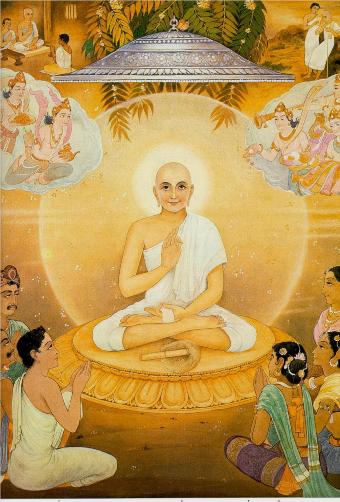
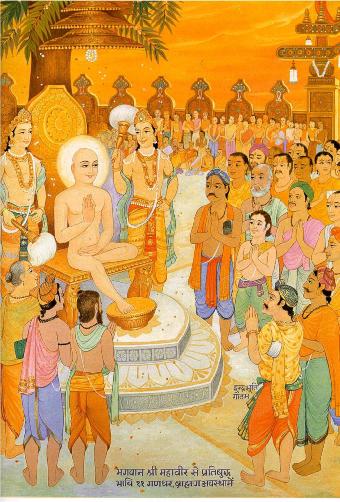
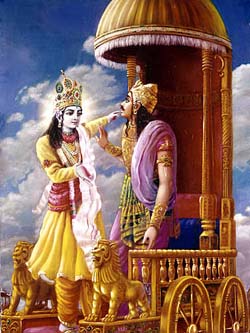
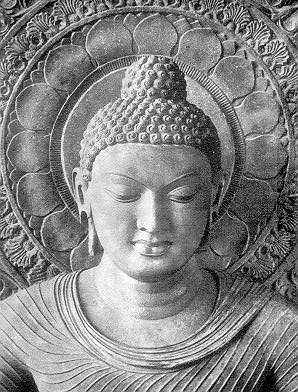
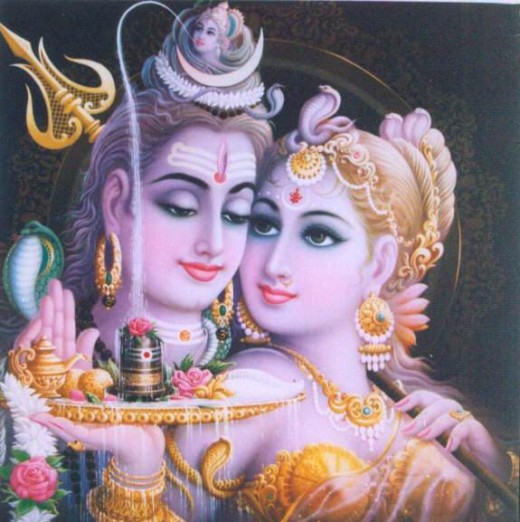
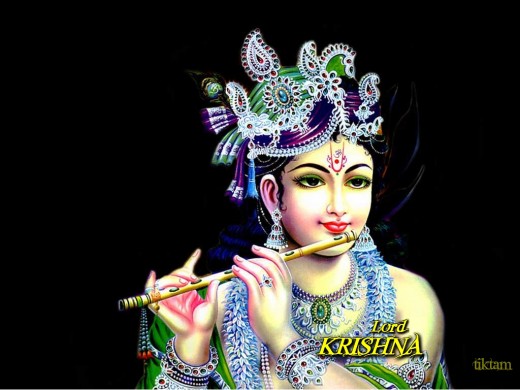
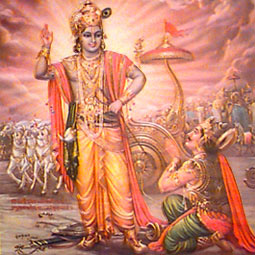

"Onion had rolled out of God's Plate"
Jains are not only vegetarians, they also avoid taking roots. So
for example they do not consume onions, garlic or potatoes. Many
Hindus also follow similar customs. For example I am a Hindu, but in
our
home also we do not consume onions or garlic. Though we do take potatoes. I myself take onions even outside in restaurants, more out
of convenience. There are various reasons given for this custom. Jains
feel
that roots may have more insects who may get killed. Some people feel
that reason is that your mouth smells after consuming these. The same
can be said about most non-vegetarian dishes. Another reason given is
that these are so called Tamas goods, too much consumption
of them increase your
drives of senses like sex drive to an unhealthier level. Among the
reasons given one which I like and enjoy most is that "onion had
rolled out of the
dinner plate of God. From that time it is not consumed."
A Jain painting- killing animal is only animal instinct
Some years back I had seen a Jain painting in a museum in Kolkata.
That describes very nicely some of these ideas. The painting showed a
rat being killed by a cat for food. The cat was shown to be being
bitten by a dog. The dog was shown to be being preyed by a fox and the
fox by a lion. There was a man standing and on the back of it there was
a glimpse of Mahavir Swami with a glow. Initially one is puzzled, what
does it say. In fact I was with some Europeans at that time and they
did ask me "What does it say?" Well ! what it conveys is that Mahavir
Swami is telling you that among animals, it is a natural instinct that
they kill each other for security or food. But as a human being you are
different. You should not get into such violence.
Incidentally I could not find a picture of this nice painting
on internet,
If some body knows a link, please do send it to me.
Kosambi's explanations
A completely different style of explanations are offered by a well
known historian Damodar Dharmraj Kosambi (1907-1966). Dr.
Kosambi was a great scholar. He was a mathematician as well as a
historian, a rather strange combination. He studied History quite
differently. He brought a method to style of studying History of
India. He was sympathetic to Marxist style. So Marxist type of idea
of looking at all development very mechanically with economic reasoning
is quite visible in his books. But at the same time his experimental
methods were based on seeing the cultural aspects, visiting temples
caves etc. His description of India has a very different
color and vision. His books on History of India are among the best
ones, I have read.
From Food gathering society to food producing society
He attempted to describe India what it stands for. In one of his
books he describes the difficulties
"There is no national language or alphabet; a dozen
languages and
scripts appear on the ten-rupee currency note. There is no Indian race.
People with white skins and blue eyes are as unmistakably Indian as
others with black skins and dark
eyes. In between we find every other intermediate type, though the hair
is generally black. There is no typical Indian diet, but more rice,
vegetables, and spices are eaten than in Europe. The north Indian finds
southern food unpalatable, and conversely. Some people will not touch
meat, fish, or eggs; many would and do starve to death rather than eat
beef, while others observe no such restrictions.Cultural
differences between Indians even in the same province, district, or
city are as wide as the physical differences between the various parts
of the country. Yet in spite of this apparent diversity, there is a
double unity"
Description/definition of Indian society which comes out of
Kosambi's
discussions, I like most. I put it in this form.
Indian society is a continuous transformation of food gathering
society (tribal society where you get food by hunting or plucking
fruits etc. ) to food producing society (agriculture based
society) and that transformation is still continuing.
Indeed we still have many tribes. Their ideas are respected
and not resented. At the same time we have people in cities, always thinking of
computers, atoms, stocks and what not.
In one of the books of Kosambi, there is a very interesting chapter
which I often remember. He used to live in Poona. In India in
practically
every place you can find small statues, idols, temples - some even very tiny
one consisting of just stones, relics kept with some symbolic significance and
they
can be of any type of God/Godess of any religion or their messengers, Buddha , Krishna, Hanuman
(monkey faced god ) , Durga or Christ or a Muslim saint. Some people feel every inch
of
Indian land some time or other might have been a temple, Mazar, Church, Gurudwara or a Pagoda. Near my home almost in downtown Mumbai, on a
busy road, I see practically any time of the day people in a group
of 8-10 worshiping in front of a statue of Christ, kept in a small
cupboard of size
perhaps 10"X10", just at the edge of footpath. Others walking on the
footpath or some even driving the car or motor cycle on road, most
of whom may not
be Christians, generally fold hands or bow with respect.
Now Kosambi did more than just such simple observations. He
selected four temples near his city Poona where people used to come to
worship regularly. He started making a list of people who came there
and talked with them. With in a few months, he could trace
practically in every case some common tribe to which most of them
belonged 2000 years back.
It looks like the tradition of visiting the same temple, continues via
parents, grand parents not just for decades but for hundreds of
years. Also many of the Indian traditions in a community can be traced back to original tribe from which community has evolved. Kasambi could trace for most the names of their communities. subcast or the name of their ancestor priest to some original tribe. In most countries this will be quite difficult to do since traditions die or change completely in different eras. But in Indian style, they continue for centuries and sort of continuously evolve. There is a lot of scope to study thee aspects in India and create an understanding of style of social evolving for whole human race.
Idols of gods colored with red color - arrival of Buddha
and Mahavir Swami.
Kosambi traces reasons for vegetarianism in these rituals
originating from tribal practices as well as his Marxist style-
economic reasons. It seems initially in India there were not enough
tools to do a large scale agriculture and forests were so thick that
they could not be cleared. So society was food gathering. Many Idols of
Gods
and Godesses in India, particularly those coming from tribal traditions
are generally colored with red color often using sindhoor (vermillion).
Some times whole temple has the same color. The color is very similar to the color of blood.
Kosambi says in ancient tribal rituals, when sacrifice of animals was
common and society was food gathering, blood was used. As the
society and economy changed to food producing one, a new order, style
and
rituals were needed to match the needs of changing time. That was just
the right time for Buddha and Mahavir Swami to arrive and preach
nonviolence and vegetarianism.
Vegetarianism in Europe USA - "Don't ask me why you are
uncivilized" (George Bernard Shaw)
Until recently vegetarianism was not so common among western
countries except for some interesting traditions in UK. During my
visits to Colorado decades back, most students and
several professors perhaps had no idea about even India, where exactly it
is? First
instinct of many on seeing me was that I must be Mexican. Today in USA
more than 3% of people are vegetarian. In UK it is much higher
percentage about 10%. In Other european countries it is much less. Even in earlier times some famous people have
been vegetarian, in UK like George Bernard Shaw. On being once asked why he
was vegetarian, he replied in his unique and quite British style ,
"Don't ask me why you are uncivilized".
Gandhi's Vegetarianism - My experiments with Truth
Mahatma Gandhi was a vegetarian. Of course he had to be- it would
have been perhaps unnatural otherwise. He writes in quite interesting
manner some of his puzzles about it in his autobiography. His
autobiography is among the best books, I have ever read. He called it
"My Experiments with Truth". What I like most about it is its
simplicity. Generally you would expect, a book by him will have a lot of
political ideas, philosophies and sermons. But no! he essentially
describes only his basic problems about daily living, he faced. How to
keep
things clean and how he tried to live healthy etc. For him his daily
routine done, in simple manner with strength was much more important
than all his public life.
Let the country wait
When I was a child, I remember I had seen a short documentary movie
made
in shadows rather than showing actual people. In the movie it was shown
that some of the top leaders of country were having a public meeting
near Gandhi's home and were waiting for Gandhi to come out of his
home and give a lecture. But Gandhi did not come.
He was nursing a patient suffering from leprosies. Some of the leaders
came
to his home and asked Gandhi "Please come ! The country is waiting
for
you". Gandhi says "Let the country wait, just now the need of this
patient is more urgent"
Gandhi's Puzzle -Is egg vegetarian?
Gandhi had lived in UK to study law for some time. He had
promised his mother that he will remain vegetarian while in UK. In
India, most people are what is called Lacto-Vegetarian. They take milk
but not eggs. In UK, he was once puzzled whether egg should
be considered vegetarian or not. He started reading books about it. He
had discussions organized in some vegetarian society. But then one day
he solved it at least for himself. He felt, he has been unnecessarily
wasting time. "After all why I am vegetarian here. Because I promised my mother that I will remain vegetarian. For my mother egg is not
vegetarian. That's it, why get lost. Egg is not vegetarian for me."
Other
reasons to be vegetarian.
Hub pages have many articles by people who are passionate about
vegetarianism. Some out of love for animals. Whitney writes a
lot of interesting articles on this topic. I give link below to one of
them. Whiteny
describes in this interesting article how human body is more
similar to those animals who are vegetarian. For example one argument
is that structure of our teeth is more suitable for vege diet. I
wonder what do biologists say? I also give link below to
one more such article by
suraj.
In
Colorado in those days, I had met a young American girl, who
was vegetarian. She told me that when she was eight years old, she saw
once a chicken getting killed. That created so much nausea in her mind
that she never took any thing non-vegetarian after that despite
scoldings by her parents.
Does the grass get hurt when you walk on it?
I remember an old Hindi movie in which a teenage heroine is shown to
be trying to convince hero about vegetarianism. Her argument is that
if "I hurt an animal , I can see that it feels pain. But when I
pluck a fruit, I do not feel plant is hurt." The hero there says
"No!
Plants also feel the pain." But my biologist friends tell me plants do
not have any known central nervous system, so perhaps they do not feel
pain. But that even I am not sure. Who knows tomorrow biologists may
find one?
One of my friends tells me that he always feels even the grass may be
feeling a little pain when we walk. "May be just a little but it does"
were his words.
Some times unknowingly you make others change style.
Some years back two of my friends whom I knew for several years
were visiting me. One was from USA and another from Denmark. On
arriving in Mumbai in January leaving snow behind they were surprised
at airport, "Even Police cops are walking in shorts." (In those days
Police cops had such a dress in Mumbai, though it is another matter
that some of them were not very happy about it). Then they gave me a
surprise. Both told me that they had become Vege. I think happiness is
natural instinct on seeing some friends follow similar style as one's
own. On the other hand you also feel pleasure in seeing a friend
having quite different style than your own.
References
1. Wikipedia is of course one of the most convenient source now
a days
http://en.wikipedia.org/wiki/Vedas
http://en.wikipedia.org/wiki/Max_M%C3%BCller
http://en.wikipedia.org/wiki/History_of_vegetarianism
http://en.wikipedia.org/wiki/Damodar_Dharmananda_Kosambi
http://en.wikipedia.org/wiki/Vegetarianism
http://en.wikipedia.org/wiki/Ashoka_the_Great
2. some other sources about ancient Hindu rituals and vegetarianism
http://www.ivu.org/news/march2000/hinduism.html
http://gita-talk.blogspot.com/2009/07/gita-talk-re-why-be-vegetarian-after.html
3. One of the books by Kosambi and many other free books are
available on Arvind Gupta's site
http://www.arvindguptatoys.com/arvindgupta/cultddk.pdf
4. Vegetarianism on hub pages - two article
http://hubpages.com/hub/not-created-to-eat-meat
http://www.raw-food-health.net/NumberOfVegetarians.html
5. Picures are from these sources
http://www.4to40.com/images/discoverindia/places/rajasthanrajputpainting/miniature_painting_kota.jpg
http://spirituality-meditation-yoga-pictures.blogspot.com/search/label/Krishna%20Radha
http://www.porchlight.ca/~blackdog/rock.jpg
http://www.porchlight.ca/~blackdog/sarhead.jpg
http://viewonbuddhism.org/images/buddha_borobudur_chanez.jpg
http://www.siamese-dream.com/white-buddha-meditation.html
http://www.google.co.in/imgres?imgurl=http://broapocalypse.files.wordpress.com/2009/04/shivaparvati.jpg&imgrefurl=http://broapoca
http://www.varanasicity.com/history-of-varanasi.html
http://hubpages.com/hub/Ashok-A-Short-Biography-of-Ashoka-the-Great-of-India
http://www.vaastuinternational.com/spiritual_guide/gita.jpg
http://krishna.org/a-practical-prescription-to-self-realization/


